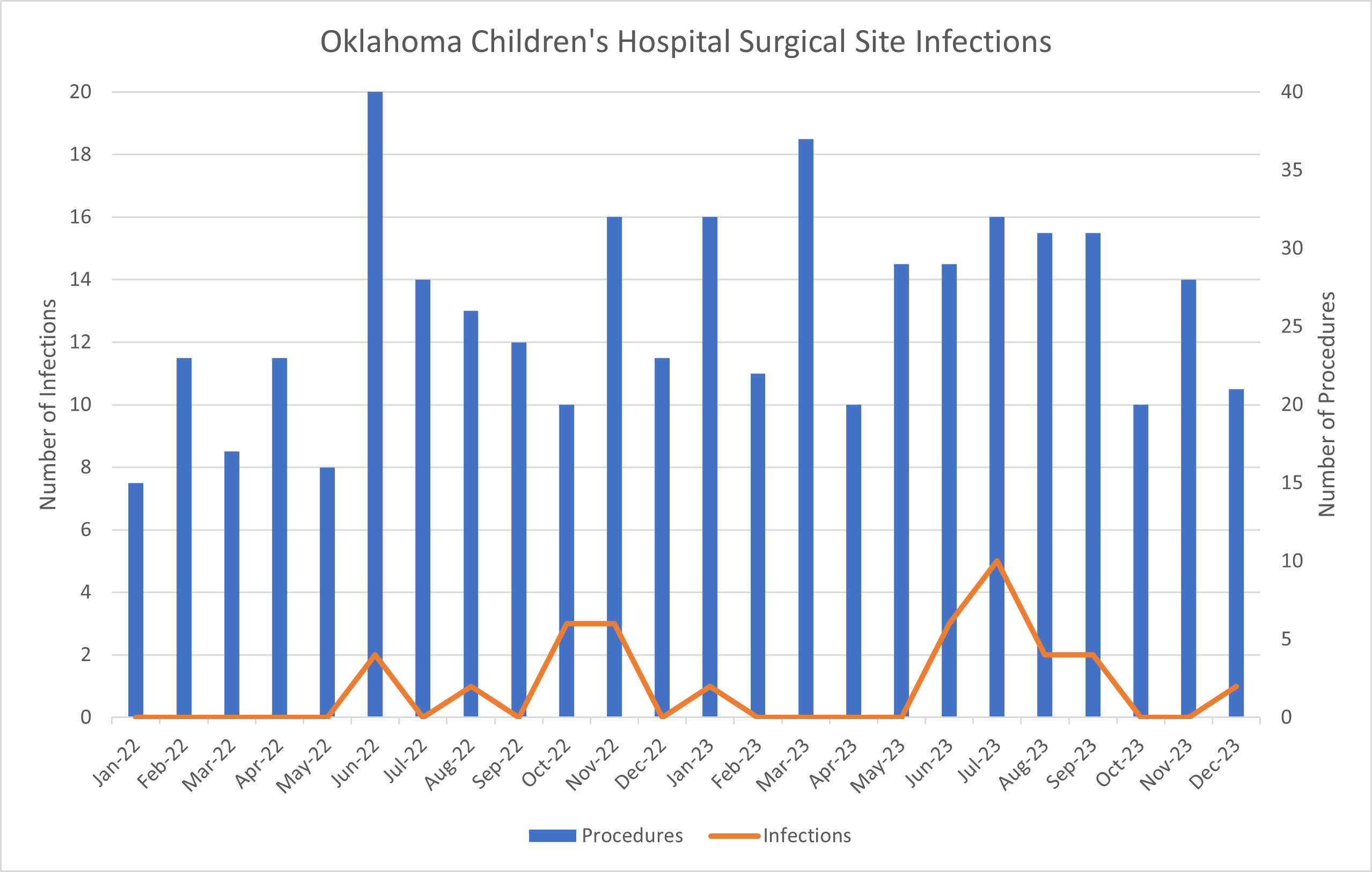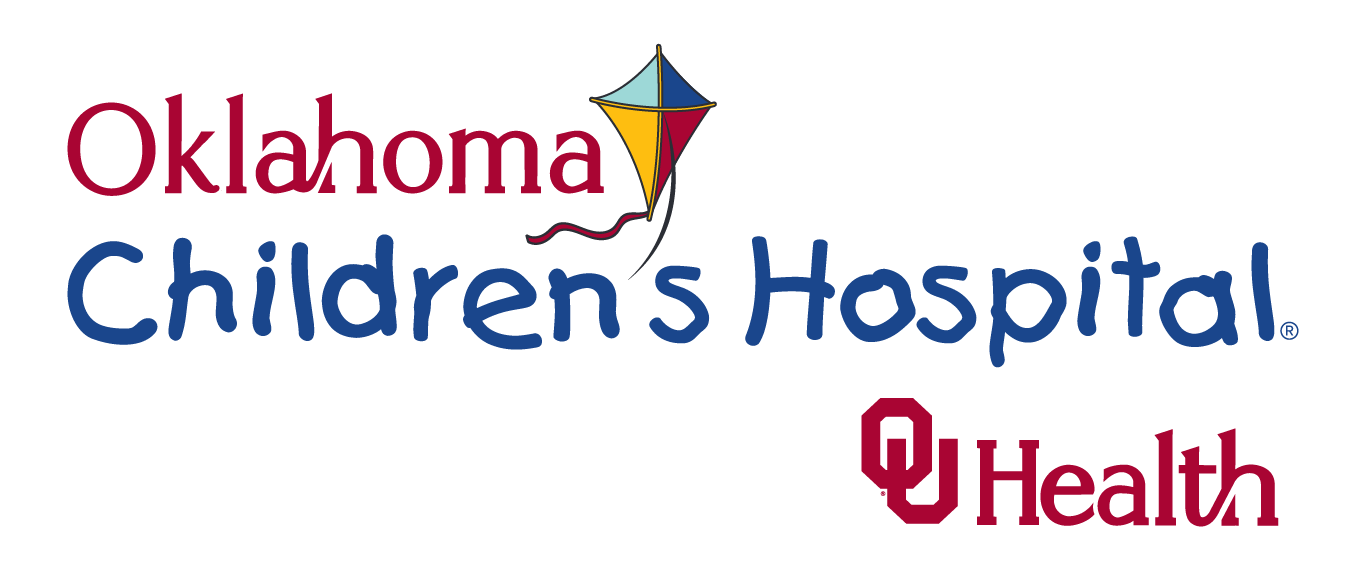Quality Performance Report
At Oklahoma Children’s Hospital OU Health we track multiple data points to monitor our quality performance in key areas. Measuring these areas helps us to ensure we’re providing the best possible care and a safe environment for every one of our patients and their families.
Patient Experience
Patient experience refers to how satisfied our patients and families are with Oklahoma Children’s Hospital based on their interactions with our team members, services, resources, and other aspects of their care. We believe that a patient's experience begins the first moment they start seeking help, whether that be researching available services on our website, scheduling an appointment over the phone, or entering our facility for the first time.
Often, the patient experience does not end at the end of an appointment or discharge from the hospital. The patient experience may extend to when they are filling prescriptions at an OU Health pharmacy, receiving test results, or understanding a bill for services. Each of these interactions are part of the patient experience.
How Do We Measure
The values in the graph below represents the Oklahoma Children’s Hospital Top Box score. The score is the percentage of positive responses to the question, “How likely would you be to recommend this facility of family and friends?” Response options are any number zero through 10; positive responses are those only rated at 9 or 10.
At Oklahoma Children’s Hospital, our goal is to meet or exceed expectations at every patient encounter.
July – December 2023

Hand Hygiene
We take hand hygiene compliance very seriously and would love for you to play a role in speaking up for clean hands while you are here too. Hand hygiene is defined as cleaning your hands either by washing them with soap and water or by using hand sanitizer and it is one of the most effective ways to prevent the spread of infections. The measure below shows the percent of time we wash our hands.
Don’t ever hesitate to ask people to wash their hands before coming
into contact with your child..png)
Hospital-Acquired Infections
Why is it Important to Measure?
A hospital-acquired infection is one that develops during or soon after being in the hospital. These infections can lead to a longer recovery time for patients, and in some cases could result in death. To provide the best care possible to our patients, we track and work to identify these types of infections with the goal to eliminate them altogether. Our priority at Oklahoma Children’s Hospital is to provide the safest care to our patients and families.
What Are We Doing to Reach Our Goal to Zero?
We use evidence-based guidelines and national best practices to prevent hospital-acquired infections. Process improvements currently include standard checklists and maintenance bundles to make sure we do each one right. Oklahoma Children’s Hospital has created specific workgroups to focus on each area we track so we can make continual improvements.
What Can You Do to Help?
Family members should always wash their hands when entering and exiting a patient's room. We encourage our patients and their family members to ask if our healthcare providers have washed their hands before touching the patient. If there are any concerns about the way the central line dressing looks, such as being wet, dirty, or pulling up at the edges, a staff member should be alerted immediately. Instructions on how to care for central lines and catheters will be provided to patients who are sent home with one of these lines.
What is a CLABSI (Central-Line Bloodstream Infection)?
A central line-associated bloodstream infection (CLABSI) is an infection that occurs when germs (usually bacteria or viruses) enter the blood through the central line.
How Do We Measure?
We measure our goal based on the number of infections and the number of central line days per month. Lower is better.
-How-Do-We-Measure.png)
What is a CAUTI (Catheter-Associated Urinary Tract Infection)?
A catheter-associated urinary tract infection (CAUTI) is an infection that occurs when germs (usually bacteria or viruses) enter the urinary tract through the urinary catheter.
How Do We Measure?
We measure our goal based on the number of infections and the number of urinary catheter days per month. Lower is better.
-How-Do-We-Measure.png)
What is SSI (Surgical Site Infection)?
A surgical site infection (SSI) happens when an infection occurs after a surgical procedure in the area that was operated on. These infections can range from mild to life-threatening.
At Oklahoma Children’s Hospital, we do everything we can to prevent these types of infections. This may include washing with a special soap before surgery, giving antibiotics shortly before surgery starts, keeping the surgical area very clean after surgery, and ensuring everyone washes their hands before touching the patient.
How Do We Measure?
We measure our goal based on the number of infections and the number of surgical site infections involving ventricular shunts, spinal fusions, the colon, and hip and knee prostheses per month. Lower is better.

- Includes all inpatient NHSN operative procedures in patients <18 years of age.
- The SIR is only calculated if numPred is >= 1. Lower bound of 95% Confidence Interval only calculated if infCount > 0.
- The number of predicted events is calculated based on national aggregate NHSN data from 2015. Please find the document containing the list of risk factors used in risk adjustment for each procedure at https://www.cdc.gov/nhsn/2015rebaseline/index.html
- Excludes all Superficial Incisional Secondary (SIS) and Deep Incisional Secondary (DIS) SSIs.
- Includes procedures and associated SSIs that are reported with either primary or other than primary closure technique.
Source of aggregate data: 2015 NHSN SSI Data


